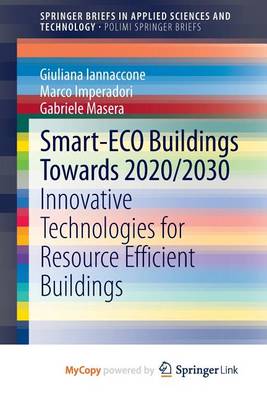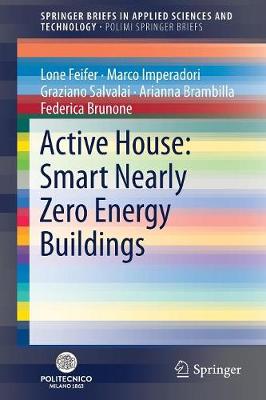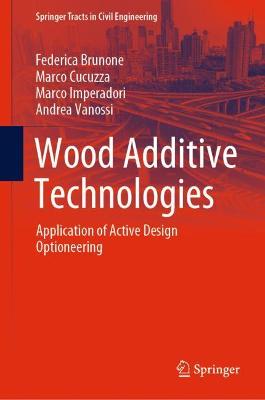PoliMI SpringerBriefs
3 total works
Smart-Eco Buildings Towards 2020/2030
by Giuliana Iannaccone, Marco Imperadori, and Gabriele Masera
The book aims to provide a basis for design and construction of resource-efficient buildings. The main concepts follow the vision of a European Sustainable Building as defined in the 2-years Smart-ECO research project funded by European Commission under the Sixth Framework Program. The focus is concentrated on innovations enabling the building sector to meet the requirements originating from the sustainability concept.
Innovation is considered at different scales: micro (product, service and process), meso (sector, supply chain, region and system) and macro (economy-wide).
Furthermore, the book focuses on aspects of relevance when striving to implement innovative technologies in building design: an integrated design process is indispensable to obtain a Smart-ECO building, independently of how effective a single technology is. Each chapter provides information on fundamental aspects of innovations towards resource-efficient buildings, shows examples and makes further guidance by way of a dedicated bibliography. Case studies are predominantly recent projects or experiences improving understanding and encouraging implementation.
Active House: Smart Nearly Zero Energy Buildings
by Lone Feifer, Marco Imperadori, Graziano Salvalai, Arianna Brambilla, and Federica Brunone
Wood Additive Technologies
by Federica Brunone, Marco Cucuzza, Marco Imperadori, and Andrea Vanossi
The book encodes a vision for the actively sustainable management and development of the built environment by referring to the application of timber-based construction systems as additive solutions for the multi-purpose improvement of existing buildings. It translates this vision into an innovative methodology for the management of the entire building process – from design to production, operation, and maintenance - and the assessment of timber-based construction performances across the whole building life-cycle. This approach is based on a multi-dimensional analysis, which starts from the structure of the Active House (AH) protocol, improved through information-integrated digital environments and multi-criteria evaluation methods, such as BIM and Design Optioneering. During the design stage, indeed, it analyzes and compares different design choices, according to the DO method, until the definition and validation of the “As-Built” step, while in the operational phase, it refers to sensors-retrieved data to show the evolution of the building behaviour, accounting for real users’ interaction, building performances decay and needs of maintenance, defining the digital twin of the building: a real Cognitive Building. Finally, the application of this methodology identifies innovative models of processes, products, and design of wood-based construction technologies, suitable to satisfy the needs of the 2D/3D construction layering for the sustainable transformation of the built environment.


